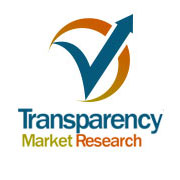Medicinal Chemistry for Drug Discovery Market: Overview
Over the last decade, industry’s productivity has been declining with rising R&D costs and time taken to reach market. Medicinal chemistry is defined as a focused science that is developed to cover a wide range of fields related with identification, synthesis and drug development for therapeutic applications. This science has evolved from medical chemists focusing on drug target or pathway in mind and league of elaborative chemistry-driven processes to modern generation of high-throughput screening (HTS) libraries that are created by combinatorial chemistry based on few structural distinctions across large drug like scaffolds.
This change was needed because of high attrition rate in pre-clinical and incubation drug development studies because of earlier methods. While the primary task of medicinal chemists has not changed significantly over a period of time, the computational tools and chemicals and perspectives at their clearance or removal have advanced extensively.
Download Free exclusive Sample of this report: http://www.transparencymarketresearch.com/sample/sample.php?flag=B&rep_id=11474
The various tools of medicinal chemistry are in silico modeling, structure-based drug design (SBDD), comparative molecular field analysis (CoMFA) or 3D QSAR method. In particular the fragment-based drug design promisingly stands out because of substantial improvements in research and productivity. One of the primary challenges of drug discovery is to design a robust drug that is both safe and effective in a wide range of population. The various drug designing types are structure-based drug design, natural products-based drug design, fragment-based drug design, diversity oriented synthesis and chemogenomics.
Medicinal Chemistry for Drug Discovery Market: Trends
Due to modern technology an alternative approach to the large combichem libraries (10,000 plus molecules) is available, these are smaller focused arrays known as chemogenetic arrays that assists for confining of particular pharmacophore model for specific family to target but considering ADME and drug-like properties. The compound arrays must be synthetically feasible and to minimize the attrition rate in preclinical testing, must also consist of specific properties regarding adsorption, distribution, metabolism, elimination and toxicity (ADMET).
During this process the ADMET constraints established from information mining, in vitro and in vivo studies are often compiled into computational packages to enable chemists to predict the drug-likeliness of a compound.
The recent market trends observed with medicinal chemistry operations are outsourced by most of the pharmaceutical companies because this helps the companies to pace up the research process making it time and cost efficient. The outsourcing trend observed from the North American and European pharmaceutical companies to the companies of developing companies like India, China and Others from Asian continent.
Medicinal Chemistry for Drug Discovery Market: Opportunities and Competitive Dynamics
The mightiest challenge in this industry is to reduce the number of drugs that fail in pre-clinical stages, as this facilitates the manufacturer to enter the market with a high priced drug. But since the ADME profiling used in silico and cellular approaches have successfully reduced the attrition rate. According to industry experts currently structure-based drug design has high acceptance followed by fragment-based variation, natural products, while diversity oriented synthesis and chemogenomics have negligible market shares. The top five active therapeutic research areas are cancer, infections, neurological, gastrointestinal, endocrine and cardiovascular.
Drug discovery is expected to be largely practiced at small niche biopharmaceutical companies around the world in the U.K., U.S., Western Europe, Eastern Europe, China, India, Brazil, South Africa and Mexico as investments, time and risks are comparatively less in this operations model than the traditional. Overall the medicinal chemistry has improved all these years with all updated technologies and methodologies.
Browse The Full Research Report At: http://www.transparencymarketresearch.com/medicinal-chemistry-for-drug-discovery-market.html
The importance of small and medium scaled companies will increase in this market as it will reduce the time and cost for a big pharmaceutical company. Hence, in drug discovery medicinal chemistry plays important role but still the accuracy and precision of the study needs to be improved to achieve minimum rejections in the preclinical studies.
The report offers a comprehensive evaluation of the market. It does so via in-depth qualitative insights, historical data, and verifiable projections about market size. The projections featured in the report have been derived using proven research methodologies and assumptions. By doing so, the research report serves as a repository of analysis and information for every facet of the market, including but not limited to: Regional markets, technology, types, and applications.
About Us
Transparency Market Research (TMR) is a market intelligence company, providing global business information reports and services. Our exclusive blend of quantitative forecasting and trends analysis provides forward-looking insight for thousands of decision makers. TMR’s experienced team of Analysts, Researchers, and Consultants, use proprietary data sources and various tools and techniques to gather and analyze information.
Our data repository is continuously updated and revised by a team of research experts, so that it always reflects the latest trends and information. With a broad research and analysis capability, Transparency Market Research employs rigorous primary and secondary research techniques in developing distinctive data sets and research material for business reports.

